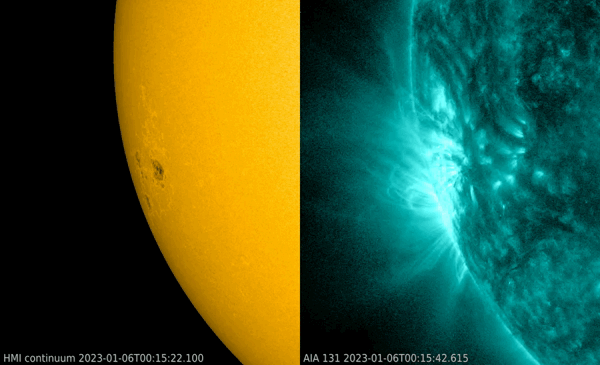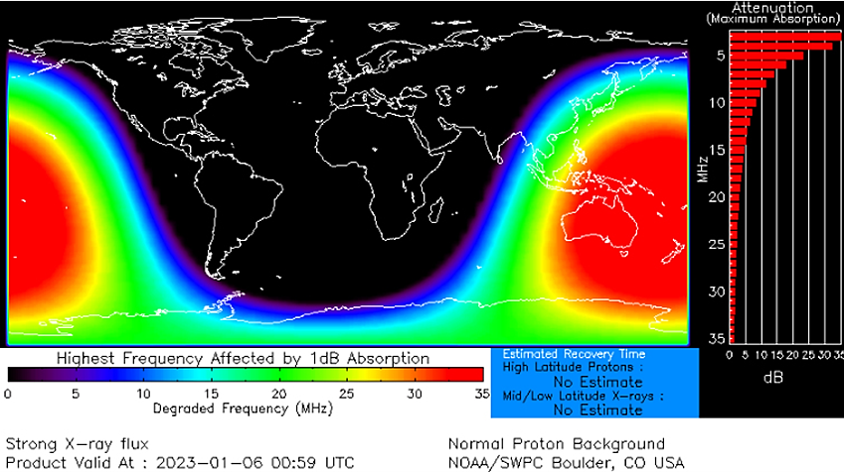NOAA 3182 produced an X1.2 flare on 6 January peaking at 00:57UTC. The region is located near the southeast solar limb, and was also responsible for a partial halo coronal mass ejection (CME) on 3 January (see CACTus; image) while the active region was still well behind the solar limb. However, for today's flare, coronagraphic and solar radio observations indicate that it was not associated with any CME. Also no post-eruption coronal loops were observed in extreme ultraviolet (EUV). SDO/AIA imagery show a bright, self-contained "blob" over the blast site gradually dissipating over the next 2 hours. So far, also no increase in the proton flux has been observed by the GOES. The side-by-side comparison underneath shows white light imagery of NOAA 3182, and SDO/AIA 131 imagery showing the flaring event. The blooming and diffraction patterns are image artefacts, not related to the flare - See this STCE newsitem for more info. For a minute or two, the flare was also faintly and briefly visible in white light (WLF) in the SDO/HMI imagery near the southern sunspot (at its "lower left" edge).

Radio observations indicate that a Tenflare, i.e. a doubling (or more) of the radio emission at 2800 MHz compared to pre-flare values, was associated with the eruption, with the solar radio flux up 420 sfu. Enhanced radio emissions were also observed at much higher frequencies (5, 8.8 and 15.4 GHz) by the Radio Solar Telescope Network (US Air Force). The Learmonth radio observations underneath from 00:00 to 02:00UTC show the absence of a Type II burst after the flaring event, which would otherwise have indicated the association with a CME.

The EUV and soft x-ray emission from the X1 flare disturbed the Earth's ionosphere. A degradation of High Frequency (HF) radio communications was observed over Australia, New-Zealand and the South-Pacific, i.e. on the sunlit (daylight) side of the Earth (D-RAP). PECASUS issued a HF COM advisory (alert message) for the benefit of the international civil aviation (ICAO). Today's flaring activity as well as the farside eruption on 3 January indicates that this active region NOAA 3182 may be the source of more and more significant eruptive events in the days to come.






